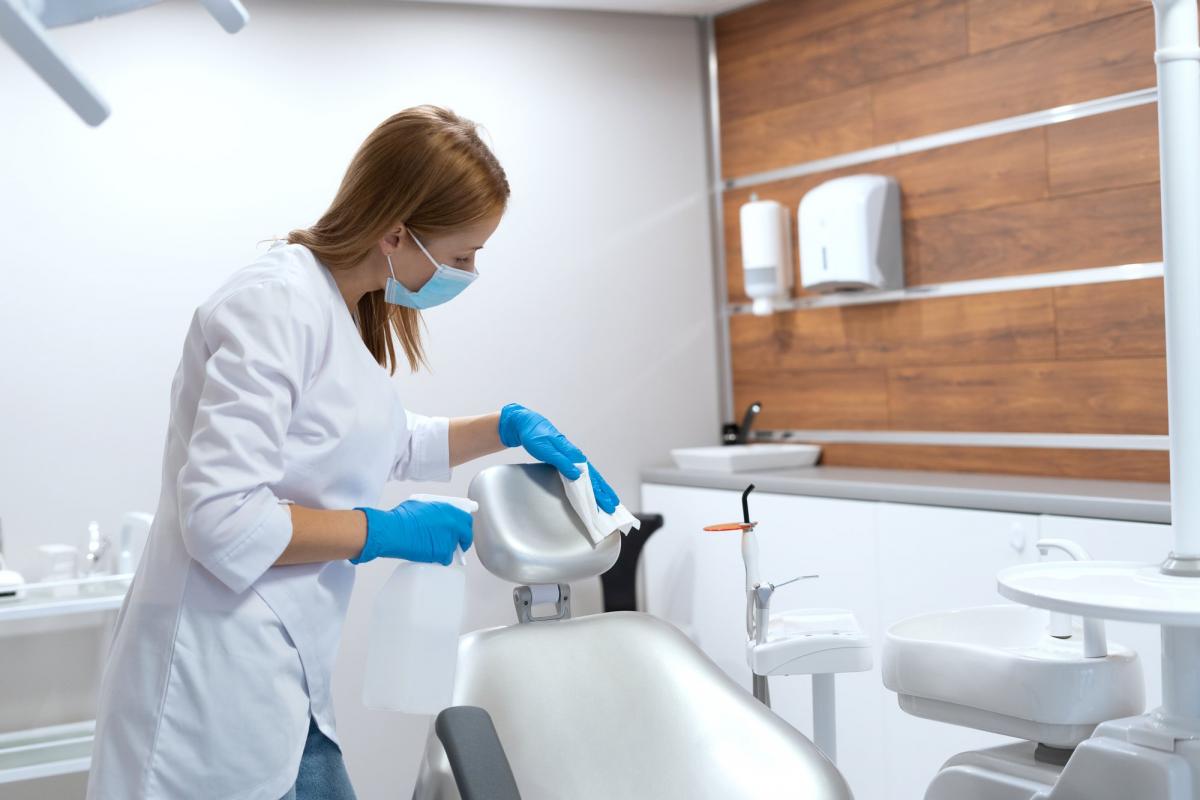The Story of HOCl
People are exposed to around 60,000 types of bacteria in the course of a normal day. While the overwhelming majority of these germs are relatively benign, the 1-2% that are not can spell serious concerns for one’s health and safety. Considering the ease with which these pathogens spread on surfaces (and sometimes through the air), it’s important to take proper precautions against them. The past two years alone serve as a worst-case example of the damage an aerosolized pathogen can do.
The body naturally fights foreign bacteria via a number of different attack routes, including white blood cell-produced hypochlorous acid (HOCl). This naturally-generated disinfectant degrades the cell walls of viruses, parasites, and microorganisms to destroy them.
One of the most invaluable defenses our bodies have against illness—HOCl, a weak acid that occurs naturally in our body—can also be harnessed artificially. Scientists seeking a powerful, non-toxic cleaning solution can produce HOCl for cleaning formulas with electrolyzed water, salt, and vinegar.

The chemical structures of these safe and simple ingredients combine and react to one another as an electric current is run through the solution. The salt separates into sodium and chloride components; negatively-charged chloride (Cl) then bonds with hydrogen and oxygen molecules from the water, changing from Cl to HOCl. The vinegar component stabilizes the pH balance, ensuring the production of HOCl with a neutral pH (as opposed to base, toxic sodium hypochlorite—bleach).
Even as it destroys 99.9% of germs and pathogens, hypochlorous acid is an incredibly non-toxic solution. Since it occurs naturally in the human body, HOCl is even safe upon inhalation or accidental ingestion. Contrast this with condensed unnatural sanitation chemicals such as bleach, which can trigger adverse reactions upon accidental inhalation, ingestion, or eye or skin contact. With its safe, non-toxic characteristics, HOCl is the superior cleaning solution for dental practices.
HOCl as a Disinfectant
The body uses HOCl to neutralize toxins, kill pathogens, reduce inflammation, and enhance the body’s natural healing abilities. Accordingly, a manufactured version promises benefits as a cleaning solution for wide range of industries and uses.
- Wound Care. HOCl is not a new revelation when it comes to wound care antiseptics. In fact, usage dates back to the World War I as a way to neutralize chemical burns and disinfect wounds. Due to its effectiveness in targeting bacteria without further harming surrounding healthy tissue, HOCl makes for an ideal wound care agent.
- Ophthalmology. Since the eyes are very sensitive, they need gentle, yet effective antibacterial care. HOCl delivers on both fronts: it is not harsh or toxic, yet remains effective in fighting infections and promoting the body’s healing responses. Despite curtailing harmful bacteria, it does not affect the biodiversity of beneficial microbes.
- Medical Disinfection. HOCl is registered as one of the most effective hospital-grade disinfectants for use in hospitals, clinics, doctors’ rooms, and ICUs. Whereas other disinfectants can leave a strong odor that trigger sinus or asthma conditions and cause irritation, HOCl has no such effects.
- Covid-19. Hypochlorous acid has proven effective in killing SARS-CoV-2, the cause of Covid-19 infection; therefore, it can serve as an effective protective measure against the virus. Since HOCl is free of alcohol, soap, and fragrance, it makes an ideal sanitizer for those with sensitive skin.
- Animal Care. HOCl is not just effective for human systems, but also for use with animals. Use HOCl to treat wounds large and small, soothe inflamed areas, and fight bacterial skin infections. Veterinary clinics also use the chemical for general sanitizing purposes.
- Dermatology. Dermatologists use the bacteria-fighting properties of HOCl to assist in acne prevention, wound healing, and inflammation. Unlike products containing a host of chemicals, alcohol, and fragrances that can trigger skin reactions, hypochlorous acid is a gentle and natural defense.
Application of HOCl in Dentistry
Performance and safety tests consistently show that HOCl performs better than older technologies such as hydrogen peroxide (H202) and hypochlorite when it comes to dental practice sanitation. Its characteristic biocompatibility means that it doesn’t cause any damage to the human reproductive system, is non-mutagenic, and is non-cytotoxic. This stands in contrast to many other disinfectants that don’t differentiate between native and foreign microbial cells.
Other disinfectants have a negative charge with pathogens, actively repelling their molecules. Meanwhile, neutral hypochlorous acid molecules rapidly attack bacteria cell walls without resistance. This significantly decreases the time it takes to kill bacteria.
With its safe and fast-acting application, HOCl promises a safe solution for patients and practitioners, while also saving time between patient changeovers. It is now integral in dissolving biofilms in intraoral dental procedures, before, during, and after treatment.
BN-200: Protection for Patients and Dental Professionals
In keeping with a proactive commitment to providing the most current, relevant products for dentistry, Sterngold now distributes hospital-grade HOCl disinfectant in BN-200, effective in killing up to 99.9% of bacteria and viruses, including SARS-CoV-2. BN-200 is up to 300 times more effective at eradicating bacteria than bleach, yet is completely safe and non-toxic.
BN-200 HOCl disinfectant comes in a dry granule form that lasts up to two years. The granules are available for purchase in pre-measured sticks for mixing, or loose in a tub. The solution can also be diffused into the air, using a special humidifier, to surround an area with continued protection for a designated period of time.
Contact Sterngold today to find out more about protection and prevention products for the practice and the dental laboratory.

